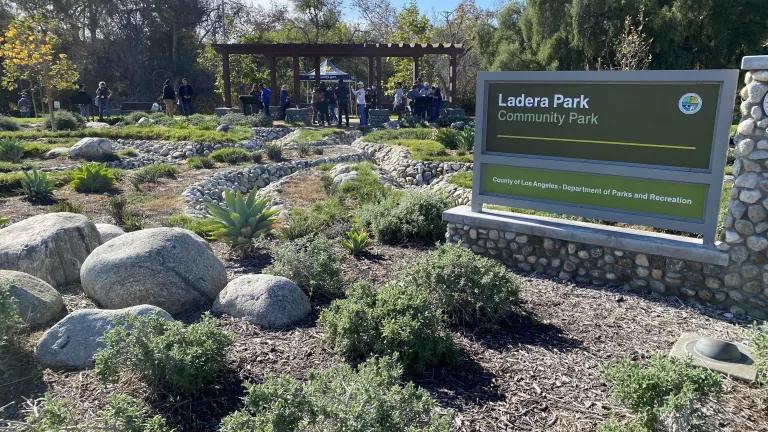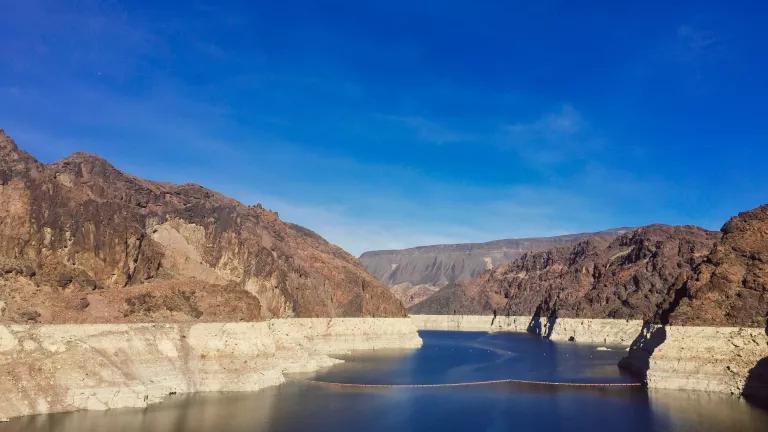Proponents of CA Water Infrastructure Cause Permit Delays
The permitting process isn’t broken. What’s most lacking is good faith by proponents of new infrastructure projects.

Suisun Marsh in Solano County, California
Paul Hames/California Department of Water Resources (CDWR)
In addition to misleading attacks on environmental protections in the Bay-Delta, there has also been a lot of misinformation about permitting water infrastructure in California. It’s true that permitting water infrastructure takes time. It's important to get permitting right, because these projects cost billions of dollars to ratepayers, who need to ensure that these are smart investments; permitting is also critically important to ensure that these projects do not fail in an earthquake or flood, do not harm other water users, and protect salmon and the environment – and the fishing jobs, Tribes, and communities that depend on them.
But permitting of proposed new dams and water infrastructure in California's Bay-Delta is taking significantly longer because the applicants for these projects have undermined and delayed the permitting process.
For instance, the Sites Reservoir project had to release a revised draft / supplemental environmental review under NEPA/CEQA in 2021, causing several years of delay, because the 2017 environmental review failed to provide the public and decisionmakers with accurate information about the potential impacts and alternatives - the fundamental purpose of NEPA and CEQA. Instead, the 2017 DEIS/DEIR only considered a single operational alternative that clearly wasn’t permittable, refusing to analyze any alternatives with more environmentally protective operations. It's no surprise they had to do a revised environmental review and downsize the project. Yet the 2021 supplemental environmental review likewise only includes a single operational alternative, despite state agencies explicitly writing in both 2017 and 2021 that the environmental documents need to consider a range of operational alternatives, including more protective environmental environmental regulations in the Delta, and raising concerns that the proposed operations would unreasonably harm salmon and other fish and wildlife. In addition, the water rights application submitted for Sites Reservoir to the State Water Board in 2022 was not deemed adequate, causing months of delay, because of the lack of adequate modeling of water available for diversion in light of reasonably foreseeable strengthened environmental protections in the Bay-Delta - the same problem with the NEPA/CEQA documents. The updated water availability modeling submitted to the SWRCB in January 2023 estimates that the project is likely to be able to divert far less water than the proponents are hoping for, in light of reasonably foreseeable environmental regulations and diversions by other water rights holders (this conservative analysis estimates as little as 80,000 acre feet of water supply per year on average). That's certainly not the end of the story, but it's critically important information for regulators and those considering spending billions of dollars on this project -- analysis and information that the applicant refused to do for years, causing years of delay.
Similarly, in 2022 DWR released a draft CEQA document for the Delta Conveyance Project that only considers a single operational alternative that substantially increases water diversions from the Delta and worsens conditions for fish and wildlife compared to the dire conditions today. That’s not just NRDC’s view, but reflects the comments submitted by State agencies (see here and here), which raised concerns about the lack of operational alternatives, adverse environmental impacts to fish species, concerns with the modeling of climate change predicting a wetter future, and the need to consider more protective operational criteria. DWR is likely to face many of the same problems in terms of environmental review and water rights permitting for the Delta Conveyance Project as Sites faced, because DWR likewise refused to analyze operations with more environmentally protective requirements that limit water diversions from the Delta. What’s more, the federal government’s draft NEPA document wholly ignores the environmental impacts of operating the proposed Delta Conveyance project, which will almost certainly require supplemental NEPA analysis and cause more delays.
Permitting new infrastructure in the Bay-Delta is also going to take longer because state and federal agencies first have to revise the Trump Administration’s unlawful biological opinions and completing the update of the Bay-Delta Water Quality Control Plan (which is now in the 15th year of its triennial review that started in 2008). Building new water infrastructure doesn't generate new water supply: is what stores and diverts the water that would otherwise flow naturally downstream. The permitting process helps to ensure that water infrastructure won't physically fail in an earthquake or flood, threatening downstream communities; in addition, one of the most important challenges in permitting water infrastructure is determining how much water can sustainably be diverted. That is why the updated Bay-Delta Plan is so critical: not only will it result in long-overdue improvements in environmental protections, but it should also help permit new infrastructure -- and help water districts understand which potential new infrastructure is actually a wise investment of limited ratepayer money. While water users have repeatedly delayed the update of the Bay-Delta Plan and undermined federal environmental protections for endangered species during the Trump Administration, allowing them to continue to profit from the unsustainable status quo, this behavior also causes delay in permitting potential new infrastructure projects.
NRDC has been open to the idea of new infrastructure in the Bay-Delta that captures more water in the really wet years, provided that water infrastructure in the Bay-Delta is operated in an environmentally responsible manner -- which means less water is diverted in the average and dry years, consistent with the best available science. For instance, in 2013 NRDC was part of a coalition that asked the State and Feds to analyze a portfolio alternative for the Delta that included a new point of diversion and tunnel under the Delta, new storage south of the Delta, protective operating rules, and significant financial investments in water recycling and improved water use efficiency.
But when proponents of new water projects refuse to even analyze and consider more protective operational alternatives in the permitting processes, and when they undermine the adoption of scientifically based standards in the Delta, they delay the process of permitting new infrastructure and undermine trust that new infrastructure would be operated responsibly.
The permitting process isn’t broken, but instead what’s most lacking is good faith by proponents of new infrastructure projects.


